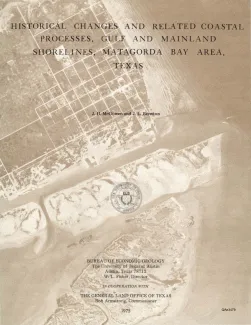
Publication Details
Geolocation:
Get the Publication
$25.00
Abstract/Description:
Change, both natural and man-induced, is a significant and defining element of the Coastal Zone. Man-induced change, by definition, can be controlled if desired. The work of nature, however, is altered and modified with much more difficulty, if at all, and attempts to do so commonly lead to unintended results. Prudent use and adequate management of the Coastal Zone must consider natural changes. These changes are expressed primarily in changes of natural boundaries changes in the position of shorelines, changes in the position of lines of vegetation, and changes in boundaries of wetlands, among others. These changes assume particular significance when an eroding (and changing) shoreline transgresses coastal structures or when natural boundaries that are also legal boundaries, such as those marking lines of vegetation or boundaries between fresh and tidal wetlands, change. The best assessment of change is over the long term. In such a manner, distinctions can be made between temporary variations and long-term change. In this report, the technique of historical monitoring has been specifically developed. Through mapping of specific, significant boundaries on vintage photographs and charts, taken at varying periods over the past 125 years, long-term direction, amount, and extent of change are determined. Through comparable historical monitoring or mapping of land use and land use activities, man-induced changes can be determined and, importantly, distinguished from natural change. A more accurate evaluation of man's impact can be made. In 1971, the Texas General Land Office and the Bureau of Economic Geology, The University of Texas at Austin, initiated on a cooperative basis a comprehensive pilot study of Matagorda Bay and environs. The first phase of that study was an analysis of historical changes and the related coastal processes, herein reported. Techniques of historical monitoring developed in this study have been utilized by the Bureau of Economic Geology to determine long-term changes of the entire Texas Gulf Coast. The second part of the Matagorda pilot study addressed in detail the biologic, physical, and chemical characteristics of sediments in Matagorda Bay. We believe that this project, historical in its orientation, gives us a better ability to make intelligent decisions for the future.